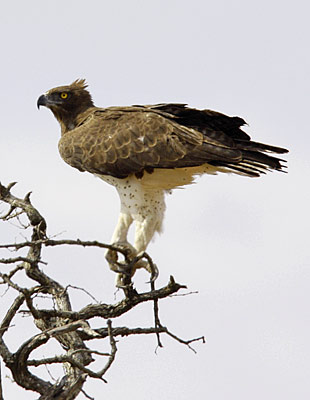
Black Stork (Endangered) photo: W. Tarboton
Mountainlands is home to 337 bird species of which 14 have declining numbers. And most of the declining species are birds of prey. This is according to the online Red Data Book of Birds 2025 which was recently launched by Birdlife South Africa. It provides the most comprehensive and current regional assessments of bird species in South Africa, Lesotho and Eswatini.
It took 3 years of rigorous research and science to compile the book and the number of threatened or potentially threatened bird species increased from 132 in 2015 to 147 in 2025. Notably, 39 species have been uplisted, signaling a decline in their conservation status, while eight have been downlisted, showing encouraging conservation progress.
Following the IUCN Red List framework for assessing species extinction risks, the book adopts global criteria to reflect the region’s unique environmental challenges based on population size, decline trends, and geographic distribution. Species are categorized into seven levels, from Regionally Extinct to Least Concern. Those at significant risk fall into three Threatened categories: Critically Endangered (CR), Endangered (EN), and Vulnerable (VU). Species nearing this threshold are classified as Near Threatened (NT).
The following threatened species occur on Mountainlands:
1. Lanner Falcon (Falco biarmicus): Near threatened
2. Hamerkop (Scopus umbrette): Near threatened
3. Forest Buzzard (Buteao trizonatus): Near threatened
4. Black-winged Kite (Elanus caeruleus): Near threatened
5. European Roller (Coracias garrulus): Near threatened
6. Lesser Kestrel (Falco naumanni): Vulnerable
7. Secretarybird (Sagittarius serpentarius): Vulnerable
8. African Crowned Eagle (Stephanoaetus coronatus): Vulnerable
9. Verreauxs’ Eagle (Aquila verreauxii): Vulnerable
10. Denham’s Bustard (Neotis denhami): Vulnerable
11. Half-collared Kingfisher (Alcedo semitorquata): Vulnerable
12. Black-rumped Buttonquail (Turnix nanus): Endangered
13. Martial Eagle (Polemaetus bellicosus): Endangered
14. Black Stork (Ciconia nigra): Endangered

The Black-rumped Buttonquail and Martial Eagle are also endangered. Photo: W . Tarboton
The justification for listing the Black-rumped Buttonquail as Regionally Endangered is based on its small, fragmented habitat that is also in decline. The regional population estimate is fewer than 1000 mature individual, with no sub-populations exceeding 250. The species is restricted to grassland, a habitat that has been reduced and continues to shrink. Because this bird is so cryptic, it is very difficult to determine the global population size.
It is estimated that only 950 – 1 100 mature Martial Eagles occur in the region and this species is also listed as Regionally Endangered. Continuous population declines of approximately 60 % over three generations are suspected and inferred.
The Black Stork population suggests a potential population size reduction of over 50% over 40 years qualifying the species as Regionally Endangered.
Birds play multi-faceted, crucial roles in sustaining ecosystems, such as controlling pests, as predators and as scavengers, as pollinators and for dispersing seeds. They also signal environmental change. In southern Africa, human activity resulting in anthropogenic disturbance, and climate pressures threaten many species. Mountainlands plays an important role in preserving biodiversity and provides an essential habitat to sustain species of birds into the future.

